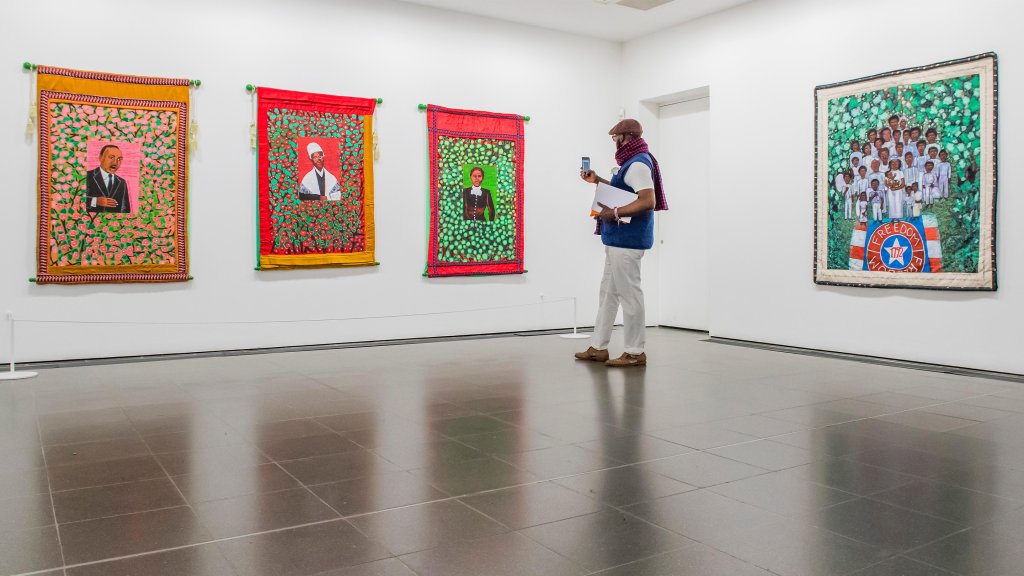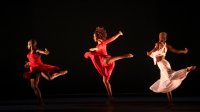Extending Black History Lessons Beyond February
Black history lessons shouldn’t stop once February ends—Black Americans’ contributions to society can be highlighted year round.
Your content has been saved!
Go to My Saved Content.Black History Month is a mere 28 days. As the shortest month of the year, it seems to fly by, and the focus on Black history seems to fizzle out once the month ends. However, it’s important that educators carry the torch and continue to integrate lessons of Black history not just in February, but throughout the year. After all, Black history is American history.
Often, Black history lessons are truncated narratives that begin with enslavement and end in civil rights, reducing conversations through a “heroes and holidays” lens. I’ve found that focusing on Black joy and Black influence in the arts is a great way to broaden students’ perspectives. Delving deeper into Black history allows students to make connections and see how every aspect of American life has been shaped by the Black experience.
Black Joy
Black joy is all around us. From music to dance to art and more, Black joy is at the heart of the Black experience in America, which has always found hope and triumph in the bleakest of circumstances. Black joy is the ability to show Black people, images, and stories that are inspiring, uplifting, and empowering. Black joy is self-expression and freedom, the freedom to create, and also the freedom to show authenticity in the Black experience through Black art, dance, and music.
Black joy is especially important and needed to counter deficit thinking and narratives that intentionally or unintentionally present Black people as only able to experience pain, suffering, or death. Black joy is in abundance and is an important concept to represent within the curriculum and on the walls of the classroom.
Black joy has been suppressed for far too long, and there are numerous ways to incorporate it into the lives of students. Images of Black children laughing, playing, or enjoying the simple pleasures of life are truly a gift.
Students can explore these images throughout history or search for current examples of Black joy found on campus or within the local community. By focusing on Black art, music, dance, and writing, we are modeling our hope to see Black children thriving in their school community. Sharing Black joy with everyone is one way to achieve this and a step in affirming Blackness, a concept that needs to be committed to throughout the year.
Black Influence in the Arts
Lessons centering Black music and how Black music has shaped every genre of music from rock ’n’ roll to country are a good way to show students how American culture has been influenced by Black culture. Students can engage in projects that introduce them to artists’ contributions to these genres of music and trace the throughlines and connections of these art forms. As part of these lessons, students can create playlists featuring Black artists from multiple genres that are sure to bring joy in the discovery.
The Alvin Ailey American Dance Theater has encapsulated the Black experience through movement and dance. Alvin Ailey’s seminal choreographic work, “Revelations,” is pure joy as its vibrant expression of Black life connects our roots in Africa, the South, and the church, as well as the strong bonds of family and community.
Ailey was a trailblazer who paved the way for other Black dancers and choreographers, and amplifying his work sets the foundation to explore wonderful contemporary artists such as Misty Copeland and Jonathan Batista, who was recently named the first Black principal dancer of the Pacific Northwest Ballet.
Students can learn about the quilting of the Gullah Geechee people in South Carolina, how this expressive art form originated among Black people, and how its intricate designs were patterns that helped the enslaved escape and make it to the Underground Railroad. Contemporary artists such as Faith Ringgold have amplified Black art through narrative quilting, highlighting the contributions of Black Americans, while also continuing the legacy of the Black women of the Gullah Geechee community.

Exploring contemporary Black visual artists and installationists, such as Kara Walker, Kehinde Wiley, and Kerry James Marshall, makes for an exciting journey of discovering the vibrant and colorful artistry and depiction of Black life, one that is sure to bring Black joy and liberation to the forefront.
Students can explore the world of fashion and innovation in learning about contemporary designer Telfar Clemens, who burst into the fashion scene with a signature tote bag culturally known as the “Bushwick Birkin.” Beyond this handbag, Telfar’s most significant contributions to the fashion world lie in his ability to thread Black style and Black aesthetic through his bold choices of color and design and appeal to an intergenerational audience.
And, as always, the Black voice is a powerful gateway to student awareness and learning about the influence of Black history. Whether it be indelible literary works from the Harlem Renaissance, poetry from the Black Arts Movement, or the world of Black culture at the intersection of sci-fi in Afro-Futurism, it is evident that the Black voice is worthy of serious consideration of student exploration in every school community.
I hope that one day Black history is properly integrated into school curricula, lessening the need for a Black History Month. But until then, let’s continue to acknowledge, honor, and celebrate Black history by focusing on Black joy and Black art and how they have enriched the lives of our students past and present.
